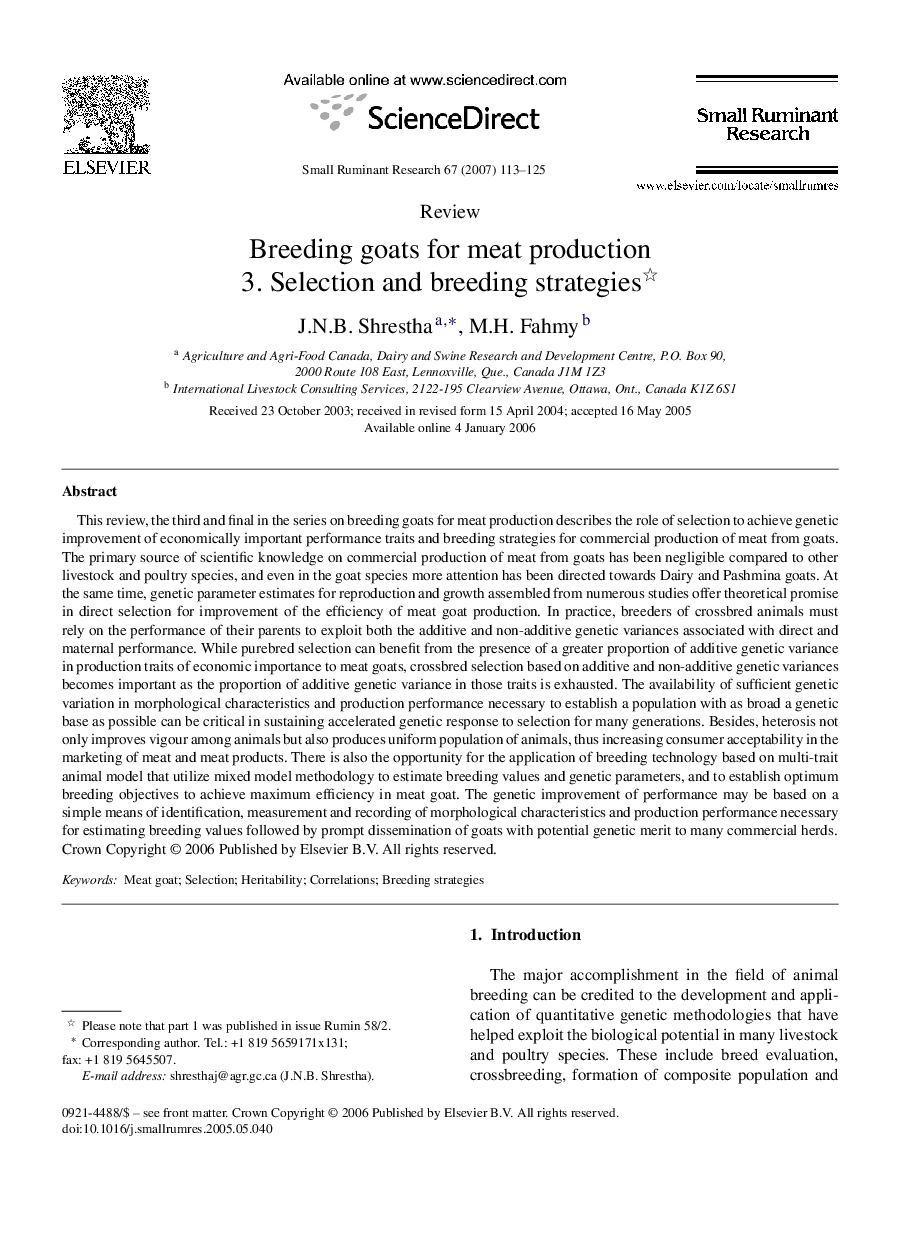| Article ID | Journal | Published Year | Pages | File Type |
|---|---|---|---|---|
| 2458432 | Small Ruminant Research | 2007 | 13 Pages |
This review, the third and final in the series on breeding goats for meat production describes the role of selection to achieve genetic improvement of economically important performance traits and breeding strategies for commercial production of meat from goats. The primary source of scientific knowledge on commercial production of meat from goats has been negligible compared to other livestock and poultry species, and even in the goat species more attention has been directed towards Dairy and Pashmina goats. At the same time, genetic parameter estimates for reproduction and growth assembled from numerous studies offer theoretical promise in direct selection for improvement of the efficiency of meat goat production. In practice, breeders of crossbred animals must rely on the performance of their parents to exploit both the additive and non-additive genetic variances associated with direct and maternal performance. While purebred selection can benefit from the presence of a greater proportion of additive genetic variance in production traits of economic importance to meat goats, crossbred selection based on additive and non-additive genetic variances becomes important as the proportion of additive genetic variance in those traits is exhausted. The availability of sufficient genetic variation in morphological characteristics and production performance necessary to establish a population with as broad a genetic base as possible can be critical in sustaining accelerated genetic response to selection for many generations. Besides, heterosis not only improves vigour among animals but also produces uniform population of animals, thus increasing consumer acceptability in the marketing of meat and meat products. There is also the opportunity for the application of breeding technology based on multi-trait animal model that utilize mixed model methodology to estimate breeding values and genetic parameters, and to establish optimum breeding objectives to achieve maximum efficiency in meat goat. The genetic improvement of performance may be based on a simple means of identification, measurement and recording of morphological characteristics and production performance necessary for estimating breeding values followed by prompt dissemination of goats with potential genetic merit to many commercial herds.
